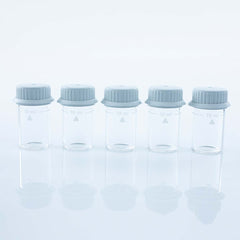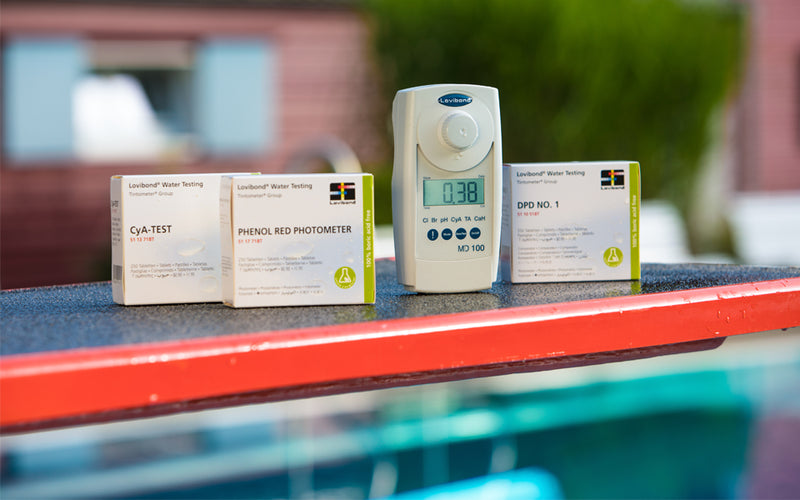This RLSS UK guide is all about how to test your swimming pool water using Lovibond photometers to ensure excellence in pool management.
Precise and efficient water testing is critical for any swimming pool, especially for those open to the public. This guide to water testing provides an in-depth understanding of advanced pool water testing techniques, focusing particularly on using Lovibond Photometers (our recommended equipment supplier).
Why is pool water testing important?
Ensuring your pool water provides safe and comfortable swimming conditions for pool users is essential, so water testing should be conducted regularly in line with the Pool Water Treatment Advisory Group (PWTAG), and the frequency and process should be detailed in your Normal Operating Procedures (NOPs) and Safe Systems of Work.
Water is the most important part of any pool and quickly deteriorates in quality if not treated and tested. When running a swimming pool, your customers trust that the water they swim in is safe. If this is not the case, you are misleading them, which could land you in trouble.
By testing the water, you are ensuring that you are:
- Safeguarding the safety of swimmers
- Providing swimmers’ comfort in the water
- Preventing the growth of harmful bacteria
- Keeping the pool equipment in good working order
- Managing chemical usage in an effective manner
- Maintaining a safe and healthy work environment
Effective water testing practices:
You must remember that you are measuring small quantities when testing your pool water, and anything you do to influence the results can make readings vastly inaccurate. Ideally, you are trying to test a representative sample of your pool and keep any errors to a minimum. The following would be recommended:
- Using the Lovibond Pool Sampler: Ensure water is sampled from the correct depth with this tool to ensure correct testing.
- Clean and dry equipment: Ensure all testing equipment is clean and dry before use to prevent contamination.
- Immediate testing: The most precise results can be obtained by testing the water samples straight after they have been collected.
- Proper handling of testing tablets: Ensure that reagent test tablets, such as DPD1, are used as directed to measure chlorine accurately.
- Routine Photometer calibration: Support the accuracy of your Lovibond photometers by calibrating them regularly.
- Consistent and correct testing location: The location you take the sample from can affect the reading – samples taken close to the inlet will likely give a reading not representative of the rest of the pool. Samples should be taken from the same place each time, at the furthest point away from the inlets (for example, the pool’s deep end).
How do you measure free and total chlorine using a Lovibond MD100 or MD110 Photometer?
In swimming pools, correct chlorine levels are essential for safety and comfort. Follow these steps to measure chlorine accurately using Lovibond Photometers:
- Switch the unit on and select the chlorine setting - CL6
- Rinse both sample cells a few times with pool water, then fill one of the cells/viles to the 10ml line with pool water
- Secure the cap and place it in the cell chamber, aligning the arrows, then press zero (instrument will zero)
- Remove the cell and decant most of the sample to the second clean cell
- To the original cell, add 1 x DPD No1 tablet and crush it using a clean rod
- Observe any red colour (Indicates the presence of chlorine)
- Refill the cell with the original sample (if colour disappears, it indicates high chlorine)
- Secure the cap, return to the photometer, align the arrows, and press the test button.
- Record reading – this is the free chlorine level
- To the same sample, add 1 x DPD No3 tablets crush, secure the cap and wait 2 minutes
- Return to the photometer, align the arrows and press the test button
- Record reading – this is the total chlorine level
- Total – Free = Combined chlorine
 |
|
Lovibond® MD100 Photometer 3 in 1 |
Lovibond® MD110T Photometer 6 in 1 |
Understanding Optimal Chlorine Levels:
For effective pool water disinfection and user safety, it is essential that chlorine levels are kept at the best level depending on:
- Size of pool
- Number of bathers
- Temperature and environmental conditions
- Type of disinfectant if secondary disinfection is present, i.e., UV
- Other water conditions, such as pH level
Chlorine is present in two formats - free (unused) and combined (used). The free chlorine level should be sufficient to ensure all contaminants are neutralised and the water is clear and safe. Free chlorine levels should be double that of combined chlorine to ensure it can act as a disinfectant. Combined chlorine is not wanted as this can cause irritation and give a strong chlorine smell. Therefore, levels of combined chlorine should be kept as low as possible (PWTAG guidance states that less than 1mg/l of combined chlorine is preferable).
Chlorine levels should be measured extensively using DPD No1 and DPD No3 tablets. Remember, pH must always be tested simultaneously as chlorine performance is intricately linked.
Do you need specific testing vials?
Whether using a photometer or comparator system, you will be using testing vials, sometimes referred to as cells. These are made specifically for the system in which they are used. They usually have graduations as the tests require a specific volume of sample.
Is it a good idea to keep spare vials available?
Yes, it is a good plan to have spare vials, especially for photometers that need them for their optical properties. The glass in these vials is usually thin and can easily break if dropped, so having spares is wise.
Other reasons why vials may need changing:
- Stained or dirty glass
- Scratches
- Erosion of graduations or fill lines
 |
 |
Lovibond® Cylindrical Glass Cells |
Lovibond® Spare Comparator Glass Cells |
Conclusion
Pool water testing using a well-known professional brand, such as Lovibond Photometers, is critical to supporting the highest pool safety and water quality standards for RLSS UK associates. This guide will help you achieve excellence in pool management and ensure that your facility meets the stringent safety standards required by users and regulatory agencies.

